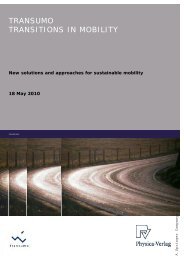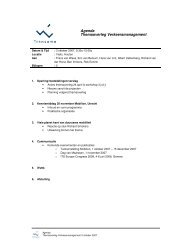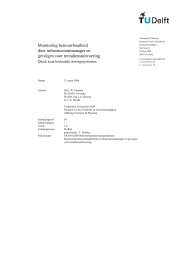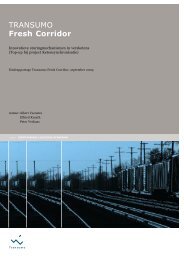Casestudie Breakdown prediction Contell PILOT - Transumo
Casestudie Breakdown prediction Contell PILOT - Transumo
Casestudie Breakdown prediction Contell PILOT - Transumo
You also want an ePaper? Increase the reach of your titles
YUMPU automatically turns print PDFs into web optimized ePapers that Google loves.
V ⊆ N × N is a set of directed connections ( n , n )<br />
{ F : n ∈ N}<br />
is a set of learning functions,<br />
which calculate new weightings<br />
w ( t ) = F ( W ( t ), y(<br />
t ), a(<br />
t ), d)<br />
i<br />
i<br />
2<br />
i<br />
i<br />
1<br />
1<br />
1<br />
i<br />
j<br />
for the neurons :<br />
with<br />
d = aimed output vector ( not necessary in case of<br />
W = weighting matrix<br />
y = output vector<br />
a = activation vector<br />
a selforganized network ( see below)<br />
Formula 5-20: Definition of V and F<br />
Figure 5-6 pictures the above given definition of an artificial neuron. Due to that<br />
functioning, an artificial neural network is similar to a Petri net but dynamic, because<br />
in- and output can vary over time.<br />
Figure 5-6: Functioning of an Artificial Neuron ([Hagen97], p. 8) (adapted)<br />
Just like a human brain, artificial neural networks have to learn. Within this<br />
initialization part, training data is applied to an untrained network to determine the<br />
weightings. These weightings will remain unchanged, if the initialization part is<br />
completed. In most cases, a representative part of the whole available data is taken<br />
as training data. ([Lusti02], p. 320-322)<br />
In general, two approaches of learning do exist:<br />
• Supervised learning<br />
• Unsupervised learning<br />
76
















